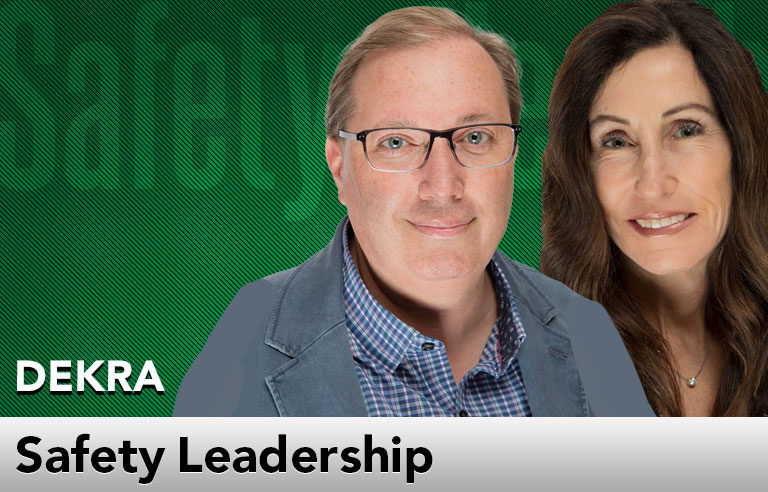Safety Leadership: Good or lucky? Assessing for future safety performance

Editor’s Note: Achieving and sustaining an injury-free workplace demands strong leadership. In this monthly column, experts from global consulting firm DEKRA share their point of view on what leaders need to know to guide their organizations to safety excellence.
The expectations placed on leaders to create a safe workplace are higher than ever. It’s no longer sufficient to respond to incidents – leaders must develop a proactive strategy to protect workers and anticipate cultural and system erosion. When nothing happens (no one is hurt), we might be lulled into thinking we’re good.
But are we good or lucky?
Most organizations are both.
An organization may go years without a significant incident, but then near misses or injuries occur. What happened? Leaders may call these one-offs, but high-reliability organizations dig deeper and find that the conditions leading to those incidents have existed for years.
These organizations look for gaps (bad news) and avoid thinking that no news is good news.
Looking for gaps is a hallmark of organizations that pursue safety excellence and top-notch people protection. Focusing on continuous improvement and challenging the status quo are crucial to high reliability. Assessments help organizations check how safe – or rather, lucky – they are and make data-driven changes instead of guessing or reacting to injury.
The objective of assessments is to uncover the hidden drivers within the work system that impact how exposure to harm is controlled. Gaps could be related to leadership practices and style, a culture that rewards people for getting it done faster at all costs, human and organizational performance factors, hiring and onboarding practices that lead to attrition, risk management, asset protection, and many other issues that aren’t always obvious.
A comprehensive assessment should delve into the deeper systemic issues that impact safety. As statistician and business consultant William Edwards Deming wrote, “94% of issues in the workplace are systemic, and only 6% are attributable to individual level idiosyncratic factors.”
This approach uncovers systemic issues that are barriers to safety performance improvement. It isn’t uncommon to begin an assessment where leaders voice frustration with workers taking shortcuts and getting injured.
“We need to hold people accountable” is a phrase we often hear. In such situations, as you dig deeper, you get to the underlying conditions that lead to shortcuts. This is almost always achieved by going to the people who know the work best – the frontline worker.
You might learn that the maintenance worker took a shortcut because he was asked to complete a repair by 4:30 p.m., and he’s supposed to leave work at 5 p.m. And the only way to get it done and leave on time is to take that shortcut.
You might find that the system has competing priorities, which can create a context for error.
Workers are told to work safely and follow rules, but also might receive competing messages (get the work done on time or around customer service being top priority).
We’ve conducted numerous assessments, and it’s rewarding to help leaders understand the underlying conditions that are impacting safety performance and develop a strategy that accelerates and amplifies performance improvement.
This article represents the views of the authors and should not be considered a National Safety Council endorsement.
 David Musgrave is a vice president in DEKRA’s (dekra.us) consulting practice. He leads the Brain-Centric Reliability practice that focuses on human and organizational performance. His areas of expertise include executive leadership development, decision science and employee engagement.
David Musgrave is a vice president in DEKRA’s (dekra.us) consulting practice. He leads the Brain-Centric Reliability practice that focuses on human and organizational performance. His areas of expertise include executive leadership development, decision science and employee engagement.
 Elizabeth Prazeres is an organizational effectiveness and change management expert at DEKRA. Her experience includes organizational change, human performance reliability and safety leadership. Prazeres has worked in various industries, including oil and gas, utilities, manufacturing, equipment rental, transportation, chemical, and energy.
Elizabeth Prazeres is an organizational effectiveness and change management expert at DEKRA. Her experience includes organizational change, human performance reliability and safety leadership. Prazeres has worked in various industries, including oil and gas, utilities, manufacturing, equipment rental, transportation, chemical, and energy.
Direct to your inbox: Sign up to be notified in email about new "Safety Leadership" columns.
Post a comment to this article
Safety+Health welcomes comments that promote respectful dialogue. Please stay on topic. Comments that contain personal attacks, profanity or abusive language – or those aggressively promoting products or services – will be removed. We reserve the right to determine which comments violate our comment policy. (Anonymous comments are welcome; merely skip the “name” field in the comment box. An email address is required but will not be included with your comment.)

